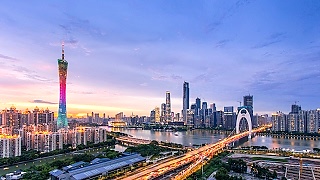These elements are commonly used in various combinations to form place names throughout China, reflecting geographical features, cultural aspects, and historical significance.
- Tiān 天 - Heaven: TianAnMen 天安门 - TianAnMen
- Mén 门 - Gate: DongMen 东门 - East Gate
- Sì 寺 - Temple: ShaoLinSi 少林寺 - ShaoLin Temple
- Shān 山 - Mountain: HuangShan 黄山 - Yellow Mountain
- Hé 河 - River: HuangHe 黄河 - Yellow River
- Jiāng 江 - River (large): ChangJiang 长江 - Yangtze River
- Hú 湖 - Lake: XiHu 西湖 - West Lake
- Hǎi 海 - Sea: QingDao 青岛 - QingDao
- Zhōu 州 - State or Prefecture: GuangZhou 广州 - GuangZhou
- Shì 市 - City: ShangHai 市 - ShangHai City
- Zhèn 镇 - Town: ZhouZhuang 镇 周庄镇 - ZhouZhuang Town
- Cūn 村 - Village: ZhouCun 周村 - Zhou Village
- Miào 庙 - Temple: WenMiao 文庙 - Confucius Temple
- Qiáo 桥 - Bridge: LuGouQiao 卢沟桥 - Marco Polo Bridge
- Dòng 洞 - Cave: YunGang ShiKu 云冈石窟 - YunGang Grottoes
- Bǎo 堡 - Fort or Castle: ZhangJiaJie 张家界 - ZhangJiaJie
- Tái 台 - Platform or Terrace: DongTai 东台 - DongTai
- Lǐng 岭 - Ridge or Mountain Range: WuLing 五岭 - Five Ridges
- Gǎng 港 - Harbor or Port: XiangGang 香港 - Hong Kong
- Yuàn 苑 - Park or Garden: YiHeYuan 颐和园 - Summer Palace
- Quán 泉 - Spring: JiNan 济南 - JiNan
- Wān 湾 - Bay: ShenZhen Wan 深圳湾 - ShenZhen Bay
- Dǎo 岛 - Island: HaiNan Dao 海南岛 - HaiNan Island
- Chéng 城 - City or Town: NanJing Cheng 南京城 - NanJing City
- Guǎngchǎng 广场 - Square: TianAnMen GuangChang 天安门广场 - TianAnMen Square
- Gōng 宫 - Palace: GuGong 故宫 - Forbidden City
- Yuàn 院 - Courtyard or Compound: BeiJing DaXue 北京大学 - Peking University
- Cūnzhuāng 村庄 - Village: ZhouZhuang Cun 周庄村 - ZhouZhuang Village
- Qū 区 - District or Area: ChaoYang Qu 朝阳区 - ChaoYang District
- Lù 路 - Road or Street: Chang'An Lu 长安路 - Chang'An Road
- Jiē 街 - Street: WangFuJing Jie 王府井街 - WangFuJing Street
- Fāng 坊 - Lane or Alley: NanLuoGuXiang 南锣鼓巷 - NanLuoGuXiang
- Běi 北 - North: BeiJing 北京 - BeiJing
- Nán 南 - South: NanJing 南京 - NanJing
- Dōng 东 - East: DongGuan 东莞 - DongGuan
- Xī 西 - West: Xi'An 西安 - Xi'An
- Zhōng 中 - Central: ZhongShan 中山 - ZhongShan
- Wài 外 - Outer: WaiTan 外滩 - The Bund
- Nèi 内 - Inner: NeiMengGu 内蒙古 - Inner Mongolia
- Xīn 新 - New: XinJiang 新疆 - XinJiang
- Jiù 旧 - Old: JiuJinShan 旧金山 - San Francisco
- Shàng 上 - Upper: ShangHai 上海 - ShangHai
- Xià 下 - Lower: XiaGuan 下关 - XiaGuan
- Qián 前 - Front: QianMen 前门 - QianMen
- Hòu 后 - Back: HouHai 后海 - HouHai
- Cháng 长 - Long: ChangChun 长春 - ChangChun
- Duǎn 短 - Short: DuanShan 短山 - DuanShan
- Gāo 高 - High: GaoXiong 高雄 - KaoHsiung
- Dī 低 - Low: DiCun 低村 - DiCun
- Dà 大 - Big: DaTong 大同 - DaTong
- Xiǎo 小 - Small: XiaoZhen 小镇 - XiaoZhen
- Lóng 龙 - Dragon: LongYan 龙岩 - LongYan
- Fèng 凤 - Phoenix: FengYang 凤阳 - FengYang
- Fú 福 - Fortune: FuZhou 福州 - FuZhou
- Ān 安 - Peace: Xi'An 西安 - Xi'An
- Qìng 庆 - Celebration: QingYang 庆阳 - QingYang
- Xīng 兴 - Prosperous: XingHua 兴化 - XingHua
- Jí 吉 - Lucky: JiLin 吉林 - JiLin
- Xiáng 祥 - Auspicious: XiangFu 祥符 - XiangFu
- Guāng 光 - Light: GuangZhou 广州 - GuangZhou
- Míng 明 - Bright: MingGuang 明光 - MingGuang
- Hékǒu 河口 - River Mouth: HeKou 河口 - HeKou
- Qiáotóu 桥头 - Bridgehead: QiaoTou 桥头 - QiaoTou
- Shānjiǎo 山脚 - Foothill: ShanJiao 山脚 - ShanJiao
- Hǎibīn 海滨 - Seaside: HaiBin 海滨 - HaiBin
- Mǎtóu 码头 - Wharf: MaTou 码头 - MaTou
- Gǔ 古 - Ancient: GuZhen 古镇 - GuZhen
- Wén 文 - Culture: WenHua Cun 文化村 - WenHua Village
- Chāng 昌 - Flourishing: ChangPing 昌平 - ChangPing
- Cuì 翠 - Emerald (green): CuiHu 翠湖 - CuiHu
- Jīn 金 - Gold: JinShan 金山 - JinShan
- Yín 银 - Silver: YinChuan 银川 - YinChuan
- Qīng 青 - Blue/Green: QingDao 青岛 - QingDao
- Hóng 红 - Red: HongHe 红河 - HongHe
- Huáng 黄 - Yellow: HuangShan 黄山 - HuangShan
- Bái 白 - White: BaiYun 白云 - BaiYun
- Hēi 黑 - Black: HeiLongJiang 黑龙江 - HeiLongJiang
- Yáng 阳 - Sun: LuoYang 洛阳 - LuoYang
- Yīn 阴 - Shade: YinShan 阴山 - YinShan
- Xīng 星 - Star: XingZi 星子 - XingZi
- Yuè 月 - Moon: YueLiang Wan 月亮湾 - Moon Bay
- Huā 花 - Flower: HuaDu 花都 - HuaDu
- Cǎo 草 - Grass: CaoYuan 草原 - Grassland
- Shù 树 - Tree: ShuCun 树村 - ShuCun
- Lín 林 - Forest: LinHai 林海 - LinHai
- Yuán 园 - Garden: YuanLin 园林 - YuanLin
- Nóng 农 - Agricultural: NongChang 农场 - NongChang
- Gōng 工 - Industrial: GongYe Qu 工业区 - GongYe District
- Shāng 商 - Commercial: ShangYe Jie 商业街 - Commercial Street
- Xué 学 - Learning: XueYuan Lu 学院路 - XueYuan Road
- Yī 医 - Medical: YiYuan Jie 医院街 - YiYuan Street
- Zhàn 站 - Station: HuoChe Zhan 火车站 - Train Station
- Shì 室 - Room: BanGong Shi 办公室 - Office
- Lóu 楼 - Building: GaoLou 高楼 - Tall Building
- Qū 区 - Area/District: ShiQu 市区 - Urban Area
- Yuánqū 园区 - Park/Zone: GongYe YuanQu 工业园区 - Industrial Park
- Jīdì 基地 - Base: KeJi JiDi 科技基地 - Technology Base
- Jiēdào 街道 - Street: Gu JieDao 古街道 - Ancient Street
- Xiǎoqū 小区 - Residential area: XiaoQū 小区 - Residential Area
- Zhōngxīn 中心 - Center: Shi ZhōngXīn 市中心 - City Center
Chinese city names and their meanings :
- BeiJing 北京 - North Capital
- ShangHai 上海 - Above Sea
- ChongQing 重庆 - Double Celebration
- TianJin 天津 - Heavenly Ford
- GuangZhou 广州 - Expansive Prefecture
- ShenZhen 深圳 - Deep Ditch
- ChengDu 成都 - Become Capital
- Nanjing 南京 - South Capital
- Xi'An 西安 - Western Peace
- HangZhou 杭州 - Hang Prefecture
- Wuhan 武汉 - Combined from WuChang (武昌) and HanKou (汉口)
- SuZhou 苏州 - Su Prefecture
- Shenyang 沈阳 - Rising Sun
- Dongguan 东莞 - East Pass
- Ningbo 宁波 - Tranquil Waves
- Qingdao 青岛 - Green Island
- Guiyang 贵阳 - Precious Sun
- Haikou 海口 - Sea Mouth
- Kunming 昆明 - Bright Merits
- Xiamen 厦门 - Door of the House
 A guide to the meaning of place names in China
A guide to the meaning of place names in China


![Fun teacher . . . [videogallery type=playlist id=PLneZiE_zP2-wKOn0bDZ1p5VEph5GvHbl7 c=3 num=50] Beginners' Chinese language](https://img.youtube.com/vi/gX3xCsoTbDs/mqdefault.jpg)











